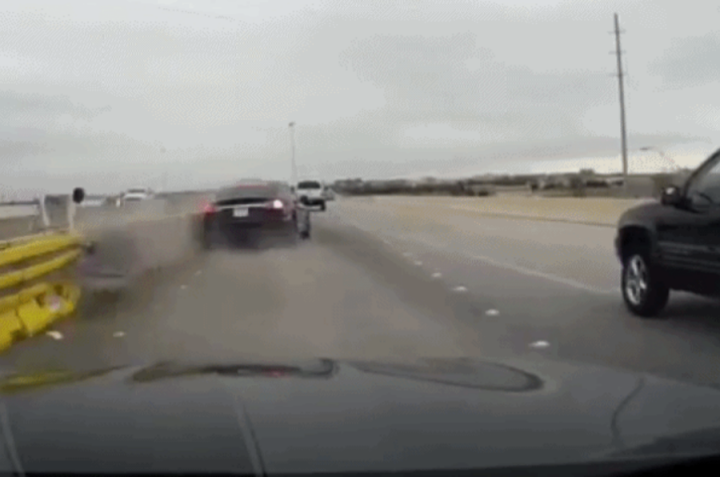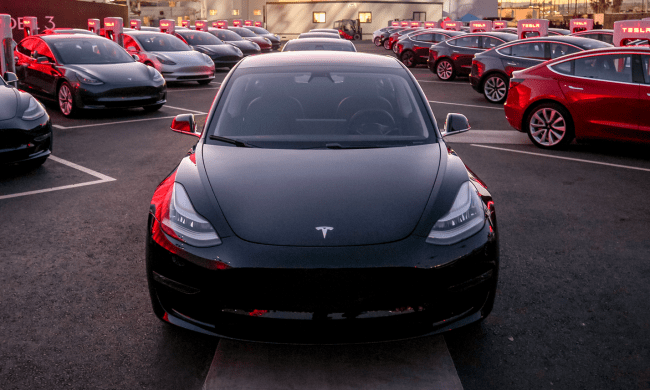
The driver posted, “I was driving in the left lane of a two-lane highway. The car is AP1 (first generation Autopilot) and I’ve never had any problems until today. Autopilot was on and didn’t give me a warning. It misread the road and hit the barrier. After the airbags deployed there was a bunch of smoke and my car rolled to a grinding stop. Thankfully no one was hurt and I walked away with only bruises.”
A comment on his own post suggested what might have happened, “LOOKS LIKE OP OMITTED TO POINT OUT THAT THERE WAS A CONSTRUCTION ZONE AND FAILED TO TAKE CONTROL WHEN THE CONSTRUCTION BARRIER SUDDENLY APPEARED.”
Three days later another post in the same subreddit included the following gif with a comment that read in part, “This is probably one of the more interesting examples I have seen. Terrible road work design, this might be one of the most aggressive lane shifts I have ever seen. Being an AP1 car with only radar and the single front camera I can see how AP had no idea this was coming especially given the close following distance.”

This car had the first-generation autopilot with fewer detection devices than on newer models. Even with later generations like the Tesla Model X P100D (which our own Alex K. described as “what cars will look like in the future“), however, Tesla has been consistent in statements that drivers using autopilot must keep their hands on the steering wheel and be alert to take control when needed.
Granted the lane change barrier appeared quickly with no warning and the roadway lane markers give no indication of the shift. Drivers could easily be confused and autonomous vehicle systems rated anything less than four or five would be hard-pressed to detect this problem. In the end, however, the driver needs to be aware and ready to take over — that didn’t happen.
Car manufacturers, technology companies, and ride-hailing services remain convinced that self driving cars are the future of commuting, in spite of problems like these. Companies like Google’s Waymo have bet billions on the technology, and are even duking it out in court. Whichever company owns self-driving tech may reshape the entire auto industry — in spite of the bumps encountered on the road along the way.



